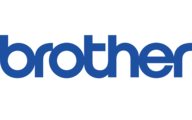Janome 5024 Excel II Decor Manual
Læs nedenfor 📖 manual på dansk for Janome 5024 Excel II Decor (41 sider) i kategorien Symaskine. Denne guide var nyttig for 7 personer og blev bedømt med 4.5 stjerner i gennemsnit af 2 brugere
Side 1/41

INSTRUCTION BOOK
Produkt Specifikationer
| Mærke: | Janome |
| Kategori: | Symaskine |
| Model: | 5024 Excel II Decor |
Har du brug for hjælp?
Hvis du har brug for hjælp til Janome 5024 Excel II Decor stil et spørgsmål nedenfor, og andre brugere vil svare dig
Symaskine Janome Manualer

4 Marts 2025

4 Marts 2025

4 Marts 2025

4 Marts 2025

4 Marts 2025

4 Marts 2025

12 Februar 2025

6 Februar 2025

6 Februar 2025

5 Oktober 2024
Symaskine Manualer
- Symaskine Sinbo
- Symaskine Ikea
- Symaskine SilverCrest
- Symaskine Toyota
- Symaskine EasyMaxx
- Symaskine Elna
- Symaskine Singer
- Symaskine Juki
- Symaskine Siemens
- Symaskine Husqvarna
- Symaskine AEG
- Symaskine Hugin
- Symaskine Pfaff
- Symaskine Livoo
- Symaskine Brother
- Symaskine Emerio
- Symaskine TriStar
- Symaskine TecLime
- Symaskine Blaupunkt
- Symaskine Privileg
- Symaskine Medion
- Symaskine Kohler
- Symaskine Lifetec
- Symaskine Micromaxx
- Symaskine Lervia
- Symaskine Anker-Bernette
- Symaskine RCE
- Symaskine Mellerware
- Symaskine Bernette
- Symaskine Husqvarna-Viking
- Symaskine Bernina
- Symaskine Baby Lock
- Symaskine Ambiano
- Symaskine Dürkopp Adler
- Symaskine Huskystar
- Symaskine Hema
- Symaskine Prixton
- Symaskine Termozeta
- Symaskine Easy Home
- Symaskine Alfa
- Symaskine Cecotec
- Symaskine Silver
- Symaskine Solac
- Symaskine Primera
- Symaskine Crofton
- Symaskine Jocca
- Symaskine Kenmore
- Symaskine Bestron
- Symaskine Kunft
- Symaskine Union Special
- Symaskine LERAN
- Symaskine Veritas
- Symaskine Yamato
- Symaskine Mistral
- Symaskine Aigger
- Symaskine Jata
- Symaskine Guzzanti
- Symaskine Necchi
- Symaskine Kayser
- Symaskine Carina
- Symaskine Vendomatic
- Symaskine Home Electric
- Symaskine Wëasy
- Symaskine Empisal
- Symaskine Lewenstein
- Symaskine Victoria
- Symaskine Durabase
- Symaskine Meister Craft
- Symaskine Yamata
- Symaskine Łucznik
- Symaskine Prince
- Symaskine Hofmann
- Symaskine Muller
- Symaskine Sinojo
- Symaskine Gritzner
- Symaskine W6
- Symaskine Zippy
- Symaskine Feiyue
- Symaskine Mediashop
- Symaskine ER
- Symaskine Novamatic
- Symaskine Siemssen
- Symaskine Mio Star
- Symaskine SteamMax
Nyeste Symaskine Manualer

5 Februar 2025

5 Februar 2025

4 Februar 2025

2 Februar 2025

15 Januar 2025

13 Januar 2025

13 Januar 2025

12 Januar 2025

12 Januar 2025

12 Januar 2025